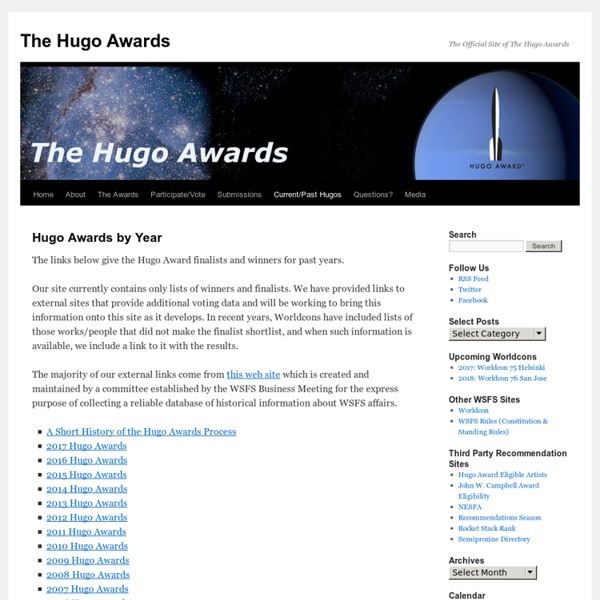The Hugo Awards
The Hugo Awards The Official Site of The Hugo Awards Skip to content Hugo Awards by Year The links below give the Hugo Award finalists and winners for past years. Our site currently contains only lists of winners and finalists. The majority of our external links come from this web site which is created and maintained by a committee established by the WSFS Business Meeting for the express purpose of collecting a reliable database of historical information about WSFS affairs. The Hugo Awards Proudly powered by WordPress.
Locus Online
The Recommended Fantasy Author List
The Recommended Fantasy Author List Contents "I dare not post, but I will wink and hold out mine homepage. It is a simple one, but what though? It will waste time, and it will endure flames as another man's page will - and there's an end About the List The list is alphabetic by author. THIS LISTING DOES NOT PRETEND TO LIST EVERY WORK BY EVERY AUTHOR LISTED, nor is it intended to do so. This is NOT a listing of the FAQmaster's personal favorites. Series titles are in bold italics, and titles within the series follow. This listing was created in April 1994, following what seemed like the 900th posting of "what other authors should I read?" This list doesn't contain shared world novels and short story collections, except in those cases where I feel like including them (hey, it's called Editorial Privilege.) The dividing line between fantasy, science fiction, and horror is indistinct and highly subjective. Three cheers for: Anthony Chan Mike Loux Paul Farris & Raj Shah
The SF Site
Your Picks: Top 100 Science-Fiction, Fantasy Books
More than 5,000 of you nominated. More than 60,000 of you voted. And now the results are in. The winners of NPR's Top 100 Science-Fiction and Fantasy survey are an intriguing mix of classic and contemporary titles. A quick word about what's here, and what's not: Our panel of experts reviewed hundreds of the most popular nominations and tossed out those that didn't fit the survey's criteria (after — we assure you — much passionate, thoughtful, gleefully nerdy discussion). So, at last, here are your favorite science-fiction and fantasy novels. 1.
Related:
Related:



